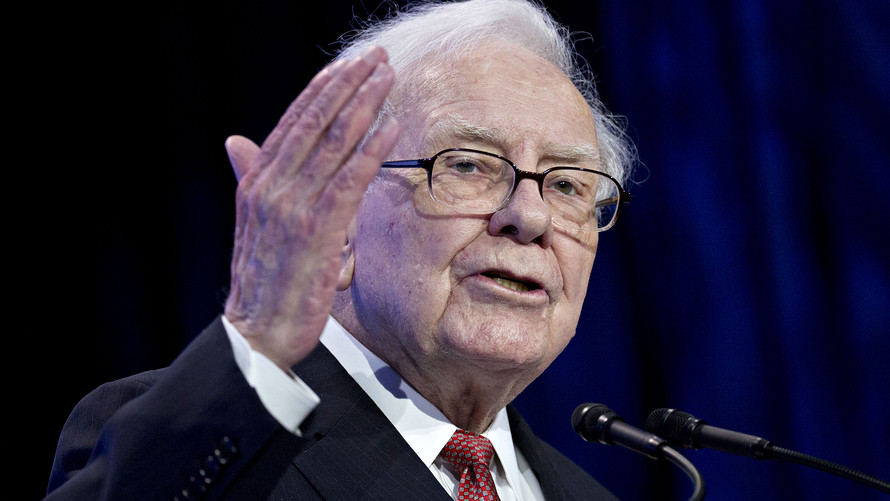“I’ve got a couple of other businesses here. Company E is the ecstasy on the left. You can see earnings went up nicely: they went from $4million to $27 million. They only employed assets of $17 million, so that is a reallywonderful business. On $17 million they earned $27 million, 150% on invested capital. That is a good business. The one on the right, Company A, the agony, had $11 or $12 million tied up, and some years made a few bucks and in some years lost a few bucks.Now, here again we might ask ourselves, ‘What differentiates these companies?’ Does anybody have any idea why Company E might have done so much better than Company A? Usually somebody says at this point, ‘Maybe Company E was better managed than Company A. ‘There’s only one problem with that conclusion, and that is Company E and Company A had the same manager me!The Company E is our candy business, See’s Candy out in California. I don’t know how many of you come from the west, but it dominates the boxed chocolate business out there and the earnings went from $4 million to $27million, and in the year that just ended they were about $38 million. In other words, they mail us all the money they make every year and they keep growing, and making more money and everybody’s very happy.Company A was our textile business. That’s a business that took me 22 years to figure out it wasn’t very good. Well, in the textile business, we made over half the men’s suit linings in the United States. If you wore a men’s suit, chances were that it had a Hathaway lining. And we made them during World War II, when customers couldn’t get their linings from other people. Sears Roebuck voted us “Supplier of the Year”. They were wild about us. The thing was, they wouldn’t give us another half a cent a yard because nobody had ever gone into a men’s clothing store and asked for a pin striped suit with a Hathaway lining. You just don’t see that.As a practical matter, if some guy’s going to offer them a lining for 79 cents a yard, it makes no difference who’s going to take them fishing, and supplied them during World War II, and was personal friends with theChairman of Sears. Because we charged 79½ cents a yard, it was “no dice.”See’s Candies, on the other hand, made something that people had an emotional attachment to, and a physical attraction you might say. We’re almost to Valentine’s Day, so can you imagine going to your wife or sweetheart, handing her a box of candy and saying, “Honey, I took the low bid.”Essentially, every year for 19 years I’ve raised the price of candy on December 26. And 19 years goes by and everyone keeps buying candy. Every ten years I tried to raise the price of linings a fraction of a cent, and they’dthrow the linings back at me. Our linings were just as good as our candies. It was much harder to run the linings factory than it was to run the candy company. The problem is, just because a business is lousy doesn’t mean itisn’t difficult.You really want something where, if they don’t have it in stock, you want to go across the street to get it. Nobody cares what kind of steel goes into a car. Have you ever gone into a car dealership to buy a Cadillac andsaid: “I’d like a Cadillac that comes with steel that came from the South Works of US Steel.” It just doesn’t work that way, so when General Motors buys they call in all the steel companies and say, “Here’s the best pricewe’ve got so far, and you’re going to have to decide if you want to beat their price, or have your plant sit idle.A couple of fast tests about how good a business is. First question is, “How long does the management have to think before they decide to raise prices?” You’re looking at a marvelous business when you look in the mirrorand say, “Mirror, mirror on the wall, how much should I charge for Coke this fall?” And the mirror replies, “More.” That’s a great business. When you say, like we used to in the textile business, when you get down on your knees,call in all the priests, rabbis, and everyone else, and say, “Just another half a cent a yard.” Then you get up and they say, “We won’t pay it.” It’s just night and day. I mean, if you walk into a drugstore, and you say, “I’d like aHershey bar” and the man says, “I don’t have any Hershey bars, but I’ve got this unmarked chocolate bar, and it’s a nickel cheaper than a Hershey bar,” you just go across the street and buy a Hershey bar. That is a good business.
The ability to raise prices the ability to differentiate yourself in a real way, and a real way means you can charge a different price that makes a great business.”

